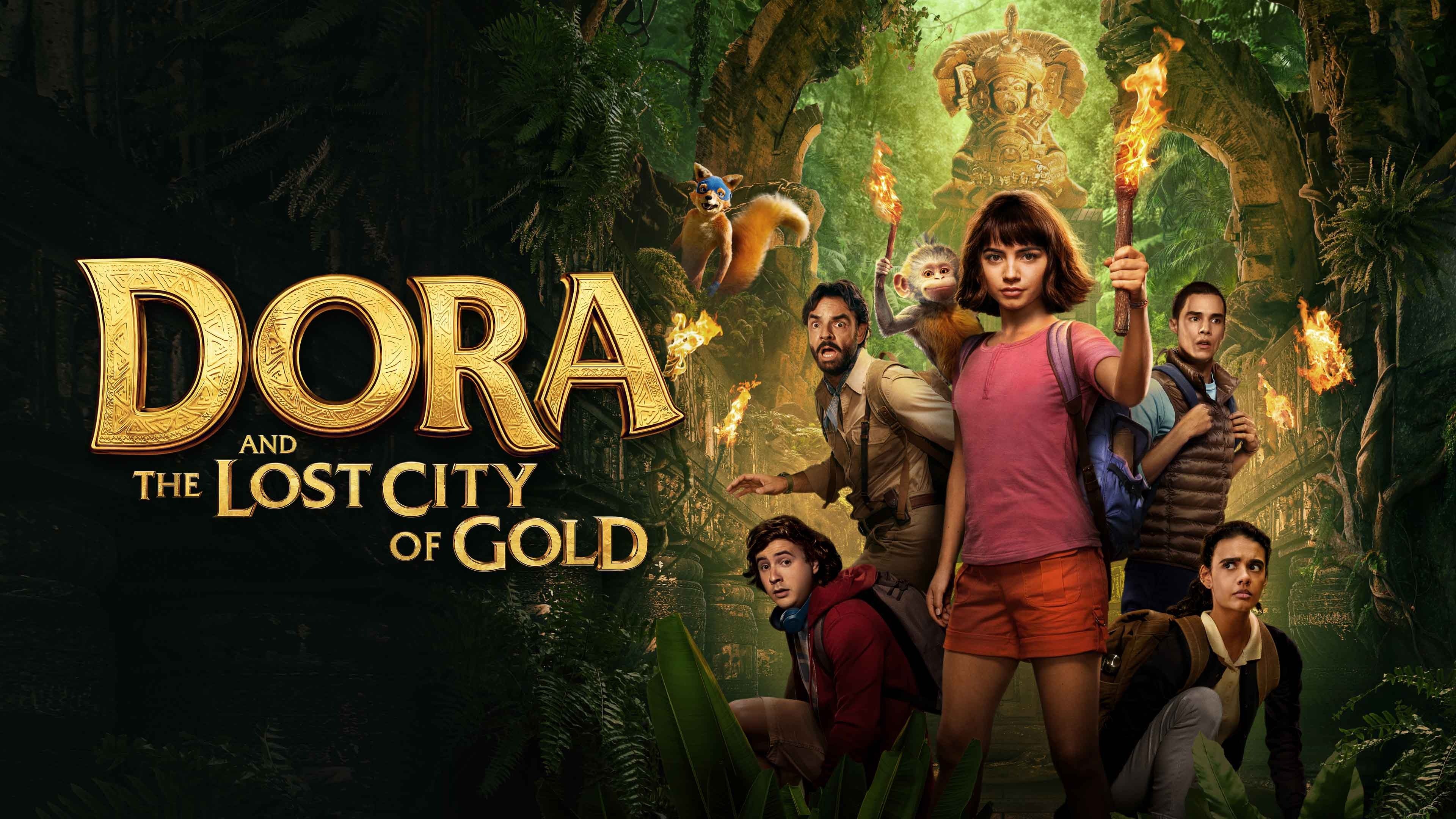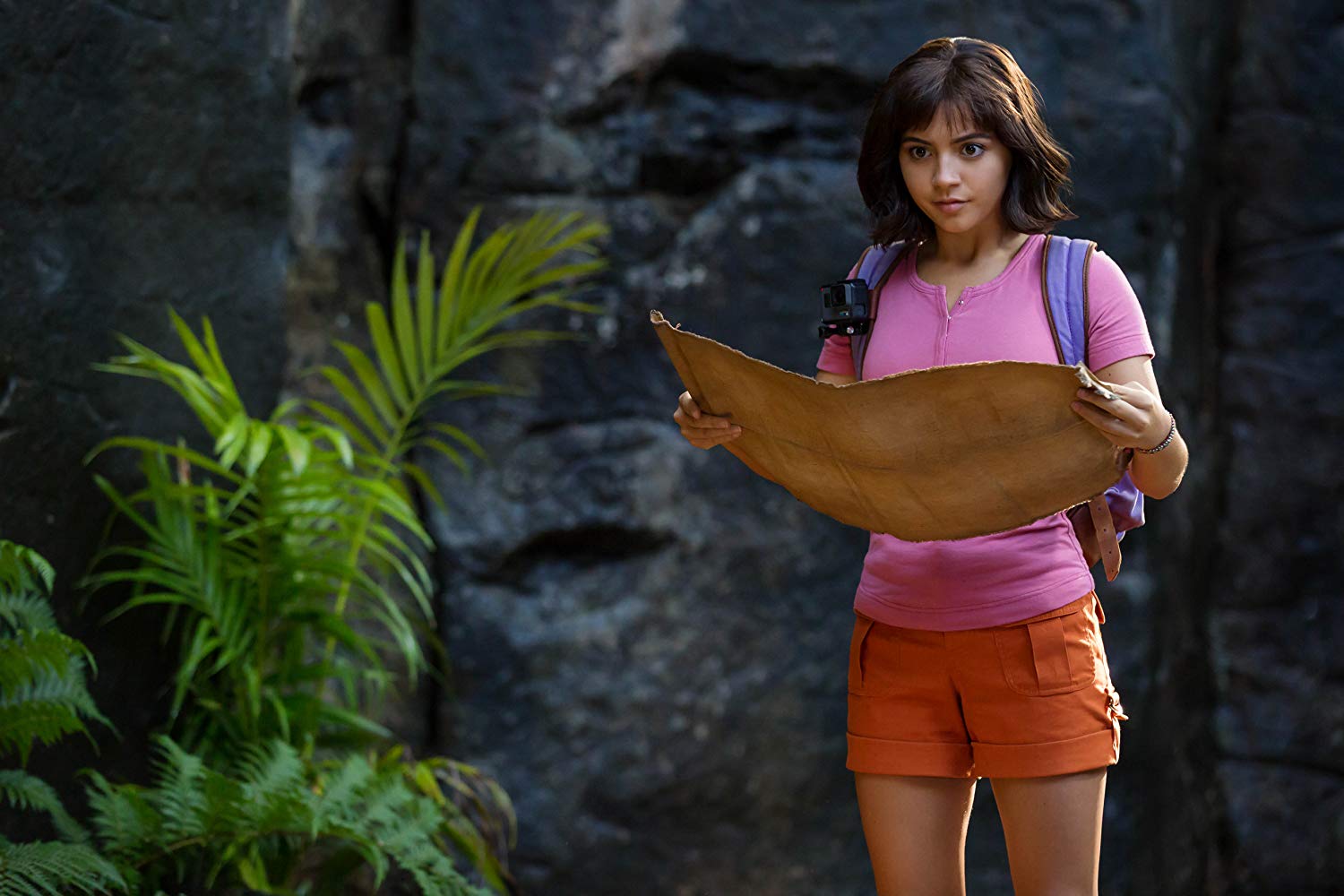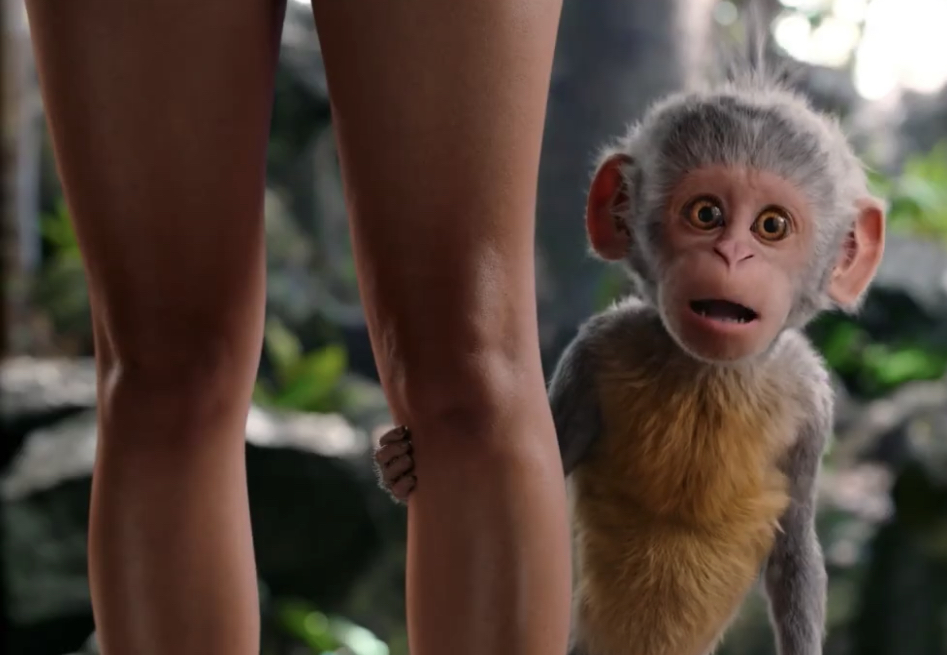As I was getting ready to head to the cinema earlier this morning, I thought about the kind of silly wisecracks I could make to open my review. Something along the lines of: “The post The Dark Knight era of cinema stinks! Christopher Nolan’s ‘dark,’ ‘gritty’ and ‘realistic’ approach to superhero filmmaking birthed an era so dull and flaccid in imagination that the lead character in the live-action Dora the Explorer film doesn’t have a talking monkey donning red boots nor a map that sings ‘if there’s a place you got to go, I’m the one you need to know, I’m the map! An absolute shame.”
But the movie beat me to the punch. Dora and the Lost City of Gold opens in a manner that jolted me out of my seat and smacked me so hard across the face, I was on the floor dying of laughter like a little kid who just watched a video of a baboon licking its butt. We hear ‘D-D-D-D DORA! D-D-D-D DORA!’ as little Dora, Diego and boots speed through the jungle in their jeep. On their tail is the nefarious thieving fox named Swiper. “Swiper, no swiping!” Dora yells! “Oh man,” responds the fox in a disgruntled tone. Dora and gang escape as the film then smoothly transitions to… Dora and Diego playing in their toy car, pretending to go on adventures and talk to animals. At one point, Dora stares directly into the camera and says “Can you say delicioso?” And Michael Pena, who plays Dora’s father looks around the room wearing a face that reads “can I have some of what my daughter is smoking?” It’s awesome!

In the most endearing of ways, the movie pokes fun at some of the more ridiculous aspects of the popular cartoon. It hilariously addresses why cartoon Dora behaves the way she does — she’s a little kid and the goings-on are all part of her imagination. The auditorium I was in, half-packed with adult journalists, all of whom were probably caught off guard, was roaring in laughter for a solid 5 minutes or so.
The movie fasts forward 10 years. Dora’s explorers/professors parents want their now teenage daughter to leave the jungle and go to the big city in hopes that she would make friends with people her age as opposed to monkeys and baby crocodiles. (Diego and his family had already migrated to the city when she was a kid). This part plays out like a young teen coming-of-age dramedy. Dora may be an expert at surviving in the jungle, but navigating the treacherous terrains of high school is a completely different feat.
Our schooling systems treat individuality like its a disease. You’re told to dress like everybody else and act like everybody else. You should be smart, but not so smart to the point that you standout. Dora struggles to cope, especially since Diego too is not the joyous and adventurous kid he used to be. These sequences aren’t written with the level of nuance that will stir the minds of adults — it isn’t Edge of Seventeen — but have enough depth in them to make kids ponder.
The narrative truly kicks in when on a field trip, Dora and some of her classmates (Jeff Wahlberg’s Diego, Madeleine Madden’s smart, uptight character and the dorky dude played by Nicholas Coombe) get kidnapped by mercenaries. Dora’s parents have been in search of the Lost City of Gold, but now they’ve gone off the grid. The mercenaries want to use Dora to track her parents so they can steal the gold. Now we have an Indiana Jones-y treasure hunt adventure flick. Unfortunately, this is when the movie becomes rather monotonous.
The journey these kids embark on lacks a sense of danger and thrills. Even the sequences involving booby-trapped hidden chambers will not make your heart jog, let alone race. The reason why films like Raiders of the Lost Ark and The Goonies are considered timeless classics is because of their awe-inspiring nature. There’s a constant sense of wonder and discovery mixed with edge of your seat-type action sequences. Here, the set pieces are largely forgettable. Admittedly, there is one sequence involving giant flowers that spit out hallucinogens that put a smile on my face.
The filmmakers also utilize Saturday morning cartoon continuity. At one point, the kids get drenched in mud; the very next scene they’re outfits are spotless again. Don’t get me wrong. The adventure isn’t inherently bad (in fact, because James Bobin understands the movie he’s making and paces it accordingly, you won’t be checking your watching hoping for it to end) — it’s simply unremarkable.
None of that bothers me as much as Swiper, masked and armed with the ability to speak, popping up every now and then throughout the movie to disrupt Dora’s plans. Didn’t the film establish at the start that the talking animals are merely a part of Dora’s imagination? If Boots can’t talk outside of little Dora’s imagination; if the mere hint of Boots being able to converse in English is treated like it’s not only mind-boggling but impossible, why is the fox able to? This isn’t me taking a “kids film” too seriously. It’s just baffling that the movie goes against its biggest rule and joke set up in its opening sequence. This is perhaps what happens when a screenplay is passed around and rewritten by a number of unrelated scribes.
But look, a lot of kids movies — which Dora and the Lost City of Gold unabashedly is — tend to treat its primary target audience like morons. This movie treats kids with respect. It’s quick, mildly entertaining (I imagine it’s very entertaining for those under the age of ten), is surprisingly witty, has a lead character who kids can legitimately look up to (played by an actress, Isabela Moner, who’s charming and charismatic) and never relies on fart jokes to get a cheap laugh. Here, the poop joke is actually funny.
Follow us on Instagram, Facebook, Twitter or Telegram for more updates and breaking news.




